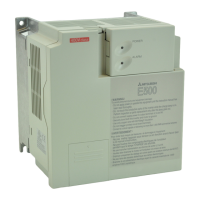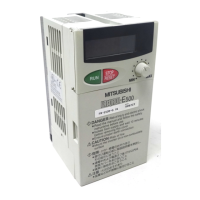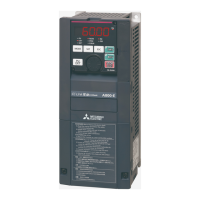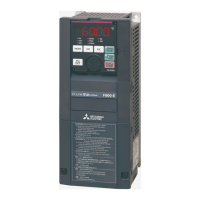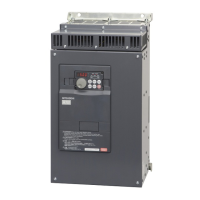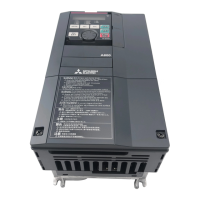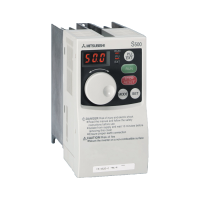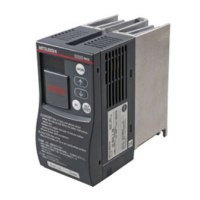PROTECTIVE FUNCTIONS
163
Measuring Points and Instruments
Item Measuring Point
Measuring
Instrument
Remarks
(Reference Measured Value)*
Power supply
voltage
(V1)
Across R-S(L
1
-L
2
), S-T(L
2
-
L
3
) and T-R(L
3
-L
1
)
Moving-iron type AC
voltmeter
Commercial power supply
Within permissible variation of AC
voltage (Refer to page 164)
Power supply
side current
(I1)
R, S and T(L
1
, L
2
and L
3
)
line currents
Moving-iron type AC
ammeter
Power supply
side power
(P1)
At R, S and T(L
1
, L
2
and
L
3
), and across R-S(L
1
-L
2
),
S-T(L
2
-L
3
) and T-R(L
3
-L
1
)
Electrodynamic type
single-phase
wattmeter
P1 = W11 + W12 + W13
(3-wattmeter method)
Power supply
side power factor
(Pf1)
Calculate after measuring power supply voltage, power supply side current and power
supply side power.
Pf1 =
3 V1 l1
×
100%
P1
×
Output side
voltage
(V2)
Across U-V, V-W and W-U
(Note 1)
(Cannot be measured
by moving-iron type)
Difference between phases is within
±
1% of maximum output voltage.
Output side
current
(I2)
U, V and W line currents
Moving-iron type AC
ammeter (Note 2)
Current should be equal to or less
than rated inverter current.
Difference between phases is 10%
or lower.
Output side
power
(P2)
At U, V and W, and across
U-V and V-W
Electrodynamic type
single-phase
wattmeter
P2 = W21 + W22
2-wattmeter method (or 3-wattmeter
method)
Output side
power factor
(Pf2)
Calculate in similar manner to power supply side power factor.
Pf2 =
3 V2 l2
×
100%
P2
×
Converter output Across P-N (+ -
−
)
Moving-coil type
(such as tester)
Inverter LED display is lit. 1.35
×
V1
Maximum 380V during regenerative
operation
Start signal
Select signal
Across STF, STR, RH, RM,
RL, MRS, RES-SD
Reset Across RES (positive)-SD
Output stop Across MRS (positive)-SD
Moving-coil type
(Meter, etc. may be
used)
(Internal resistance:
50k
Ω
or larger)
20 to 30VDC when open.
ON voltage: 1V or less
SD is
common.
Alarm signal
Across A-C
Across B-C
Moving-coil type
(such as a meter)
Continuity check
<Normal> <Fault>
Across A-C:
DiscontinuityContinuity
Across B-C:
Continuity Discontinuity
Note:1. Use FFT to measure the output voltage accurately. It can not be measured
accurately with a meter or general instrumentation.
2. If the carrier frequency exceeds 5kHz, do not use this instrument since using it
may increase eddy-current loss produced in metal parts inside the instrument,
leading to burnout. In this case, use an approximate effective value type.
5
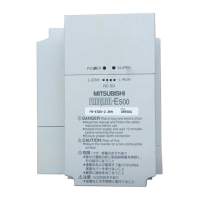
